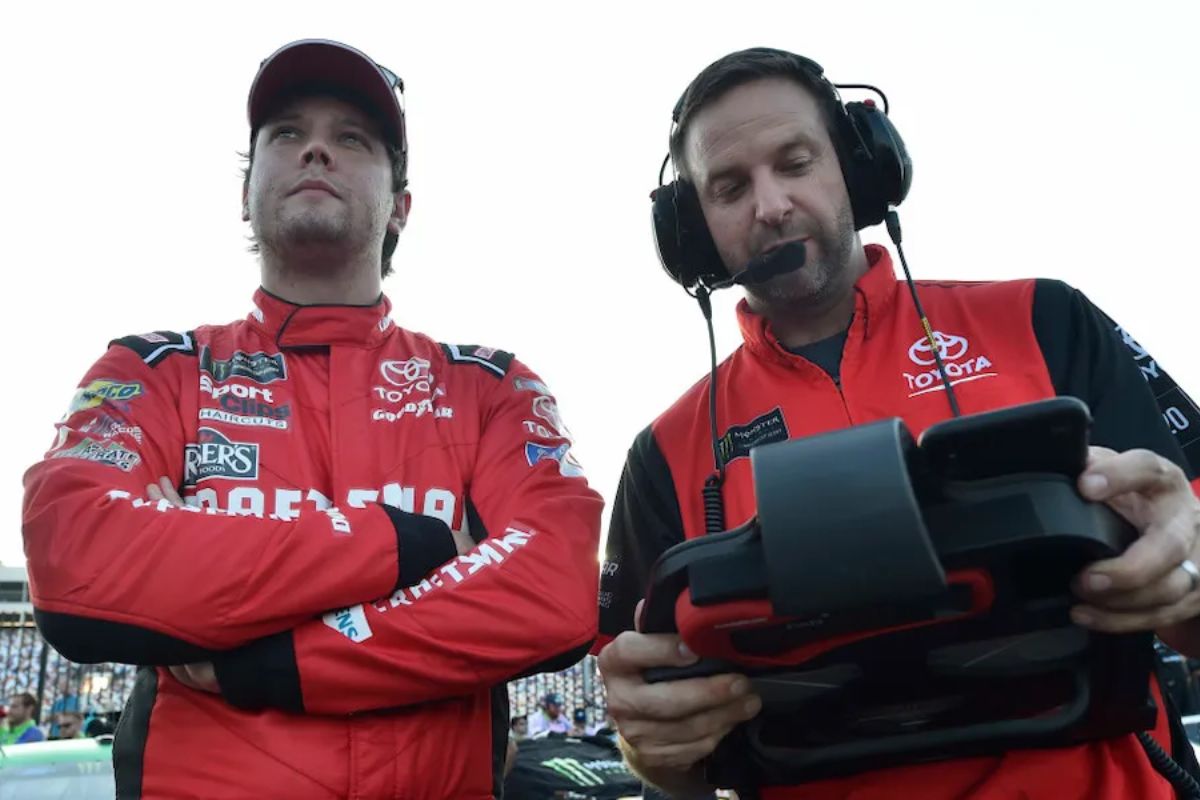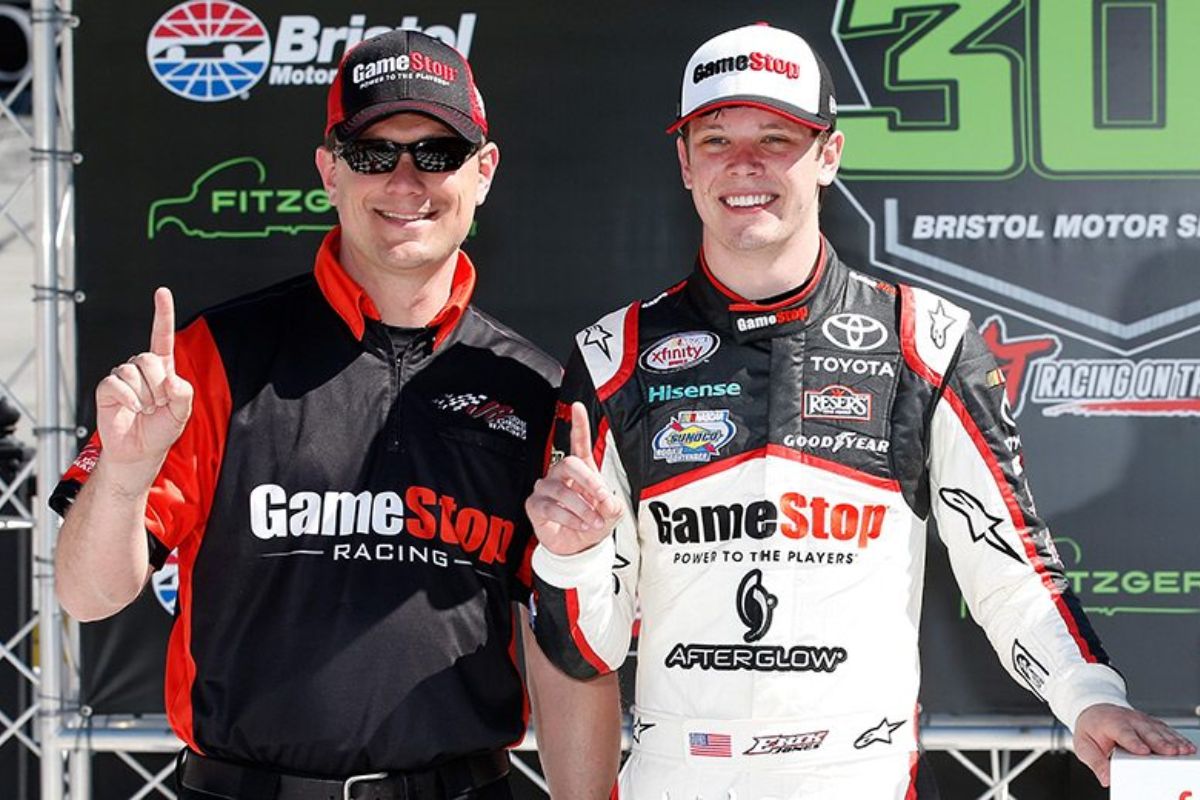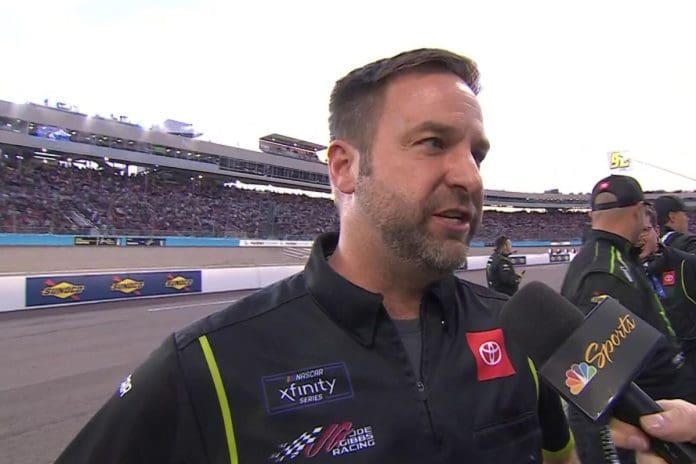Chris Gayle’s Take on All-Star Race Tires: Chris Gayle’s examination of the All-Star Race’s option tire presents a detailed view into the strategic dimensions it adds to NASCAR racing. By dissecting the dual nature of the tire – its potential for improved speed against the backdrop of decreased durability – Gayle highlights the delicate balance teams must achieve. His analysis suggests that the decision when to deploy these tires could be as crucial as the race itself.
Key Takeaways
- Chris Gayle notes the option tire offers high speed and grip initially, boosting competitiveness.
- He highlights a performance decline in the option tire after about 15 laps.
- Gayle stresses the importance of strategic pit stops to manage the tire’s performance crossover.
- The option tire adds a risk-reward element crucial for strategic planning in short track races.
- Adapting to the option tire’s characteristics can be challenging due to varying track conditions and weather.
Chris Gayle Reviews Tire Compounds for NASCAR All-Star Race
Gayle’s detailed analysis of the tire compounds reveals important dynamics that could greatly shape race strategies. The observed performance pattern of the new tires—showcasing superior speed and grip over the initial 10 to 15 laps before aligning with and then falling below the performance of the control tires—provides a key insight into their operational window. This behavior indicates a notable ‘crossover’ point, where the advantage of the new tires dissipates relative to the standard options.
Teams must now consider this crossover in their race strategy, particularly in how they plan pit stops and tire changes. The initial enhanced performance of the new compounds offers a tempting opportunity for teams to gain positions early in the race. However, the subsequent decline in performance requires careful management to avoid losing ground in the later stages. This could lead to varied strategies across the field, with some teams opting to utilize the early speed advantage to build a substantial lead, while others might conserve their tire usage for a stronger finish.

New Tire Rules for All-Star Race Could Address Short Track Issues
Building on the insights into tire performance, NASCAR’s introduction of three distinct tire compounds for the All-Star Race at North Wilkesboro is poised to tackle the unique challenges presented by short track racing. The introduction of prime tires, option tires, and wet weather tires is a strategic response to the traction issues experienced during the Bristol race earlier this year, where drivers struggled with minimal grip.
Dustin Long, a seasoned NASCAR analyst, supports these changes, underlining their potential to enrich race dynamics significantly on GoPRN. The differentiation among the tire compounds allows teams to tailor their race strategies more precisely, adapting to the evolving track conditions and their drivers’ handling preferences. This could lead to more dynamic racing, with varying strategies across teams creating a more engaging and unpredictable race outcome.
Moreover, the introduction of the option tire, in particular, introduces a risk-reward element that is vital for short track races, which often hinge on the ability to make quick, impactful decisions that can change the course of the race. The option tire, typically offering quicker performance but less durability, presents teams with critical strategic decisions that could either lead to a significant advantage or cost dearly, depending on the race development.
Gayle’s Insights on Tire Performance
Chris Gayle, an experienced crew chief, shared significant observations from the Goodyear tire test that highlight the intricate dynamics of tire performance in NASCAR’s All-Star Race. Analyzing the new tire compounds, Gayle’s insights are essential for understanding how these components behave under race conditions and the strategic implications they carry.
“It was definitely a lot faster for 10 to 15 laps. We kind of saw it crossover at about 15 laps or so. It was breaking even with the lap times from the original control tire. And then after that, it was slower for the last 10.”
“Now, you know, there are things that guys could do to, if you know you’re going to have to run longer than that on those tires to make them stay faster a little longer and not crossover-quiet as early. I think that will be interesting.”-Gayle
- Initial Performance Surge: The new tires exhibit a notable performance increase for approximately the initial 10 to 15 laps. This suggests that the compound is highly effective when fresh, offering drivers a temporary advantage in speed and handling.
- Performance Crossover: Around the 15-lap mark, the advantage of the new tires diminishes, equating to the performance of the standard control tires used previously. This crossover point is crucial for teams to take into account, as it marks the threshold where the initial benefit of the new tires ceases.
- Post-Crossover Performance Decline: After the 15-lap crossover point, the tires begin to underperform relative to the control tires. This decline extends over the following 10 laps, highlighting a decrease in both speed and stability.

Long’s Opinion on New Tire Rules
In his analysis, NASCAR expert Dustin Long views the introduction of multiple tire compounds for the All-Star Race as a beneficial development for addressing competitive dynamics on short tracks. Long observes that the variation in tire compounds offers a strategic layer previously absent, potentially elevating the tactical depth of the races.
According to Long, the incorporation of tire choices introduces a new dimension to the race, compelling teams to optimize their selections based on track conditions, weather, and race duration. His analysis suggests that this decision-making process could lead to more dynamic race outcomes.
“It’s a step, whether it will or not we’ll see, but again you’re encouraged by the fact that NASCAR and Goodyear, the drivers, everybody is willing to try something…The drivers are talking about more horsepower – that’s not going to happen. So okay what’s the next option, it’s the tire, what can be done,” dustin long said on GoPRN.
Potential Impact of New Tire Rules
The implementation of multiple tire compounds in the All-Star Race is expected to revolutionize team strategies and increase competitive interactions among drivers. This strategic evolution stems from the enhanced ability to tailor tire performance to varying track conditions and race segments. Teams will now need to make more calculated decisions on when to deploy each type of tire, balancing grip and durability against the race’s tactical demands.
- Improved Race Dynamics: Teams will have the opportunity to choose between tire compounds that offer varying degrees of performance and wear characteristics. This choice introduces a layer of strategic complexity, as teams must decide the best time to utilize each compound to gain maximum advantage.
- Driver Skill Amplification: With multiple tire options, drivers’ skills in adapting to different grip levels become essential. The ability to handle a car on diverse tire setups could distinguish the more skilled drivers from the pack, potentially reshaping leaderboards in races where strategic tire changes are crucial.
- Future Regulatory Adjustments: The success of the tire compound strategy in the All-Star Race may lead to regulatory adjustments in other races. If the new tire rules result in more competitive and engaging races, similar strategies could be adopted in other short-track events, altering the racing landscape significantly.

News in Brief: Chris Gayle’s Take on All-Star Race Tires
Chris Gayle’s analysis highlights the strategic intricacies introduced by the option tire in the All-Star Race. The adoption of this tire compels teams to carefully time their pit stops and adapt to evolving track conditions. Effective exploitation of the tire’s characteristics can greatly impact race outcomes.
Therefore, teams are compelled to engage in precise decision-making processes, balancing risk and reward to optimize performance. This adaptation not only improves competitiveness but also addresses persistent challenges in short track racing.
Also Read: Is Ty Gibbs Destined for NASCAR Greatness? Garage Talks Heat Up!


